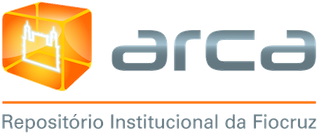Please use this identifier to cite or link to this item:
Type
ArticleCopyright
Open access
Sustainable Development Goals
04 Educação de qualidadeCollections
- IOC - Artigos de Periódicos [12978]
Metadata
Show full item record
KEY TOPICS IN MOLECULAR DOCKING FOR DRUG DESIGN
Structure-based drug design
Benchmarking sets
Consensus methods
Fragment-based
Machine learning
Affilliation
University of Cambridge. Department of Biochemistry. Cambridge, UK.
Federal University of Rio de Janeiro. School of Pharmacy. Department of Drugs and Medicines. Rio de Janeiro, RJ, Brazil.
Universidade Federal do Rio de Janeiro. Instituto de Biofísica Carlos Chagas Filho. Laboratório de Modelagem e Dinâmica Molecular. Rio de Janeiro, RJ, Brazil.
Fundação Oswaldo Cruz. Instituto Oswaldo Cruz. Laboratório de Bioquímica Experimental e Computacional de Fármacos. Rio de Janeiro, RJ, Brasil.
Federal University of Rio de Janeiro. School of Pharmacy. Department of Drugs and Medicines. Rio de Janeiro, RJ, Brazil.
Universidade Federal do Rio de Janeiro. Instituto de Biofísica Carlos Chagas Filho. Laboratório de Modelagem e Dinâmica Molecular. Rio de Janeiro, RJ, Brazil.
Fundação Oswaldo Cruz. Instituto Oswaldo Cruz. Laboratório de Bioquímica Experimental e Computacional de Fármacos. Rio de Janeiro, RJ, Brasil.
Abstract
Molecular docking has been widely employed as a fast and inexpensive technique in the past decades, both in academic and industrial settings. Although this discipline has now had enough time to consolidate, many aspects remain challenging and there is still not a straightforward and accurate route to readily pinpoint true ligands among a set of molecules, nor to identify with precision the correct ligand conformation within the binding pocket of a given target molecule. Nevertheless, new approaches continue to be developed and the volume of published works grows at a rapid pace. In this review, we present an overview of the method and attempt to summarise recent developments regarding four main aspects of molecular docking approaches: (i) the available benchmarking sets, highlighting their advantages and caveats, (ii) the advances in consensus methods, (iii) recent algorithms and applications using fragment-based approaches, and (iv) the use of machine learning algorithms in molecular docking. These recent developments incrementally contribute to an increase in accuracy and are expected, given time, and together with advances in computing power and hardware capability, to eventually accomplish the full potential of this area.
Keywords
Computer-aided drug designStructure-based drug design
Benchmarking sets
Consensus methods
Fragment-based
Machine learning


Share